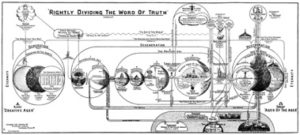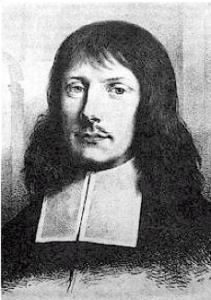My Little Gnudren,
At Ascensiontide we remember that Jesus crossed the boundaries of earthly life into a heavenly sphere, taking a human form with him. And so it is fitting that on this wondrous day we should release Psalms from Christ Church Clifton Volume IX which definitely crosses boundaries. When Gnu sketched out 009 in late 1990, physical and political barriers were being broken down and many nations were reasserting their identity without former restrictions. We witnessed the reunification of Germany, the sale of the mobile phone surpassing the one million mark, the release of Nelson Mandela. But we also witnessed the ugly Gulf War in order to eliminate weapons of mass destruction which we haven’t found yet. Despite the heartbreak of the latter, Gnu wanted to mark the celebration of old barriers overcome, people released, and new and freer communication of ideas.
He was thus emboldened to use melodies and approximations thereof from across boundaries and frontiers. So he included material from France, Germany, Japan, the Caribbean, with a nod towards Central America, and Devon [which is very near Cornwall, and which some people suggest is probably a foreign country] and finally the Anglican Church which is for many a very foreign country indeed.
For a start, you will also recall that 1991 was a year when гла́сность and Перестро́йка [Glasnost and Peristroika] had truly reached epic proportions in the Soviet Union. Mr. Mikhail Sergeyevich Gorbachev [Михаи́л Серге́евич Горбачёв] was glasnost-ing [гла́сность-ing] and Peristroika-ing [Перестро́йка-ing] all over the place.

Mr.Gorbachev out glasnost-ing and perestroika-ing all over the place, ably assisted by Mrs. Gorbachev
This culminated in the momentous event of the 25th Decemeber1991, when the Soviet hammer and sickle flag was lowered for the last time over the Kremlin, thereafter replaced by the Russian tricolour. Now those keen to note the fulfilment of prophecy and place this event within one of these charts plotting the end of the world, should hold their horses, and certainly restrain their apocalyptic horsemen.
 Prophetic Chart plotting the end of the world
Prophetic Chart plotting the end of the world
Despite the fact that this event took place on Christmas Day, Old Gnu doesn’t think it was to mark the liberation that the birth of Jesus brings by his incarnation. After all, although we think Jesus was born on the 25th December our Russian sisters and brothers in the Orthodox Church think he was born on 7th January, and in Gnuland they think he was born on the 6th January. Here is a boundary that seems impossible to cross. But Old Gnu suggests that if you want to be inclusive, it’s best to celebrate the 12 Days of Christmas and then add on at least two more. Then you can’t go wrong; unless of course you believe you will be changed into a pumpkin if you don’t take your Christmas decorations down by the 5th January. Likewise, we should emend the song, The Twelve Days of Christmas, to The Fourteen Days of Christmas, lest we exclude or offend the Russian, Greek, Coptic and Armenian Orthodox Churches, Assyrian Church of the East, parts of the Chaldean Church, Syriac Orthodox Church, Ancient Church of the East, Assyrian Pentecostal Church and Assyrian Evangelical Church. [Not absolutely sure about the last two].
And so to our boundary-crossing tracks. The melody for Psalm 106, (O give thanks to God) is an ancient French Noel, nicked straight from Monsieur Louis-Claud D’Aquin’s [1694 -1772] book of Noels for Organ [No 3 Noel en Musette, et Dialogue, et en Duo]. He was regarded by many contemporaries [and no doubt his mother] as the best organist of his generation in France. He looked like this:

Come and Worship, raise the anthem uses the hymn tune, Unser Herrscher, by Joachim Neander[1650-1680]. The following has been written about him: German student life in the 17th century was anything but refined, and Neander seems to have been as riotous and as fond of questionable pleasures as most of his fellows. Well the tune is a fair old romp, but has been sanitized into Victorian 4 part harmony in our hymnbooks. With a little help from our great father in God, Johann Sebastian, Gnu makes it bounce along; and in keeping with Herr Neander’s character you may spot a drunken sailor in the accompaniment.
 Herr Joachim Neander – observe the outlandish hairstyle compared with Mon. Louis-Claud D’Aquin.
Herr Joachim Neander – observe the outlandish hairstyle compared with Mon. Louis-Claud D’Aquin.
The next track – Abide with me – uses a tune by an Englishman, William Henry Monk, despite the words being written by a Scot who at the time was living in Brixham, dangerously near Cornwall, as we have already observed. It’s a sort of a jazz improvisation on the hymn.
 Brixham is under the red blob on the coast.
Brixham is under the red blob on the coast.
Dangerously close to Cornwall!
Psalm 118 (All who fear the Lord) takes us even further afield. The main refrain of this psalm setting is part of what Gnu remembers of a Japanese folk tune which he heard used in a catholic church when he was on holiday. Don’t ask me how this happened. Such things do occur in life from time to time. His memory of this refrain is by no means accurate; all the bits in between are Gnu creations.
Lament for the Maya took Gnu in spirit to Central America, the cradle of Maya Civilisation. He jotted this down after a visit to Blenheim Palace; once again another of those inexplicable links of association.
 Blenheim Palace
Blenheim Palace
 A Maya Palace
A Maya Palace
Spot the similarity?
The Maya were one of the first civilisations to use the concept of explicit zero. Yes we know that human sacrifice was practiced, but it seems to a layman like Gnu, that in the case of the Maya Civilisation this usually involved the decapitation or disembowelment of an enemy in a religious ritual. They should have used bombs – much more humane. We, being more enlightened, use bombs to ritually kill our enemies. We westerners ‘massacred’ much of these Central and South American Civilisations. Thus we destroyed rich veins of our planet’s history in order to feed our greed and lust for power.
Then we have echoes of the steel drum bands [Psalm 92] of the Caribbean. This is a throw back to Gnu’s juvenile years experiencing the neighbouring Notting Hill carnival. Sheer indulgence.
The last track on the original album was the glorious Evening Hymn by Balfour Gardiner. You will find much better performances and recordings of this elsewhere. But this track is here as witness to the vast richness and width of repertoire that the Christ Church singers were called upon to knock out in very little rehearsal time before we all consumed another miraculous Louise Adam’s tea. [Note to the website Editor: I’m very sorry I have no photo of one of these teas to insert here.]
Finally, in no particular order, Gnu draws your attention to Human Lives (all have an end) – from Scene 8 of the Musical, Elijah. This was written in early 1975 when Gnu should have been writing his doctoral thesis. Death is a boundary that we are all united in crossing. It is a paradox that a boundary can unite in some sort of weird way. [Always good to end on a cheerful note.]
Isn’t that part of what Easter and Ascension is about?
Vetus Pater Gnu
Academiae Musicorum et Theologia
Turris, [LA]
In Sollemnitate Ascensionis MMXVIII
Other tracks include Psalm 24 (The earth is the Lord’s), Psalm92 (O give thanks to God for he is good), Jesus bids us shine and Jesus took the bread
